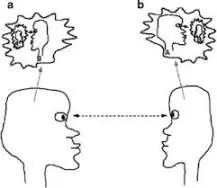Trapped in Price Beliefs: A Psychological Black Hole for 90% of Crypto Investors
Original author: hitesh.eth
Original compilation: Luffy, Foresight News
The perception of token issuance stems from an evolutionary trend. In cryptocurrency, evolutionary trends often carry memories of past profits. It's not just what happened in the past that matters, it's the patterns that worked in the past. As a result, most participants are not really betting on fundamentals, but are trying to recreate the moments that once made money, subconsciously chasing all-time highs by repeating the same behaviour.
In this market, there are participants from different time nodes:
-
Some are "veteran players" before 2018;
-
The majority are post-2020 entrants;
-
There are also new on-chain users who have joined in the past three years.
These groups have different perceptions of token issuance based on their own evolutionary tendencies. This means that they have very different emotional interpretations and expectations of the same event.
-
Pre-2018 participants still seek certainty, valuing roadmaps, tokenomics, utility, and vision, and expect teams to provide proof of work, real progress, and preferably real income. They are the natives of ICOs who have witnessed the vicissitudes of the cycle, leaning towards projects that are constantly evolving.
-
Post-2020 participants are looking for shortcuts, and most of them still hold tokens that KOLs "feed". Their mindset is rooted in wishful thinking, and they don't necessarily care about the substance of the project, only about whether someone will take it at a higher price. Patience is limited, expectations are limitless.
-
Recently, newcomers on the chain are pursuing free income or quick stimulation. They act aggressively and quickly, participating in all mining, following all trends, running for points, trying to hype up every hot spot. But their expectations are too high, even if they make a few thousand dollars, they feel that they are not enough, and they end up losing money due to overtrading, and most of them are deeply trapped in it.
These three types of participants have three different types of "mental spaces", which I call intersubjective spaces.

Intersubjectivity in cryptocurrencies is not an abstract philosophical concept, but a real one. It refers to the sharing of a common belief by many people, a "collective fiction" that becomes a reality for the time being as a result of the joint action of all people.
In the cryptocurrency space, these shared beliefs drive the market.
The minds of the participants in these spaces are intersubjective. They endorse each other, hype each other, and defend each other's views. This intersubjectivity creates a powerful group, a tribal force, that acts as a positive or negative catalyst for the token.
The people in these intersubjective spaces have been involved for a long time. They took more risks, put more effort into it, and believed the story before it became a reality.
When the tokens are delivered, they are emotionally engaged. They don't just hold tokens, they become tokens themselves. They are the community. They become the face of the project on social media, attracting attention, creating memes, engaging others, and constantly expanding the intersubject space.
Hyperliquid is a typical case: early believers form strong intersubjective groups and are rewarded through large-scale airdrops, and the airdrops themselves become evidence that "faith works", which in turn gives rise to more beliefs and forms a cycle. Similar logic applies to Memecoin such as BONK, WIF, POPCAT, etc., which are all driven by intersubjectivity first.
In cryptocurrency, price is the narrative and is the leading indicator.
If the price goes up, more people will join. But before that, someone needs to believe that the price will rise. This is where intersubjective groups come into play.
They act before the results. They became the reason. These believers do not act in isolation, they act through interpersonal collaboration. They pitch together, post together, fight together, and build a common reality together.
When others start joining, they will see the price as a confirmation. The price is no longer just a number, but a signal. This signal repeats itself, inspiring more confidence, more buying, and more price action. This is reflexivity.

The reflexive nature of cryptocurrencies means that price influences beliefs, which in turn affect prices. It's a feedback loop, where perception and valuation influence each other.
The specific performance is as follows:
-
People buy tokens due to rising prices;
-
The price increase became a proof of success;
-
Successful conversion into marketing materials;
-
Marketing shapes the narrative;
-
Narrative attracts more buyers;
-
More buyers are pushing prices up further.
But the "cause" of the price surge is far more complex than the "effect":
-
Memcoin's drive may be cultural;
-
DeFi projects may be derived from revenue;
-
AI agents may have their roots in technology.
What they all have in common is that they start with the shared beliefs of the few and end with the buying of the majority.
Those who enter in the reflexive stage usually buy "dreams" rather than logic, and they become the "exit fluidity" of the intersubjective stage entrants.
At this point, the game is asymmetrical.
Participants in two stages (the intersubjectivity stage and the reflexivity stage) manipulate information, create narratives, distort facts, and expand beliefs to align others with their version of reality.
Over time, multiple realities have formed around the same symbol. Each group has slightly different beliefs. These are perceived realities, miniature echo chambers of faith. Each group holds different views on different grounds, expects different outcomes, and withdraws at different moments. These microcosmic intersubjective spaces create turmoil, fear, greed, and often even chaos.
Most people in these miniature realities fall into extreme greed, forgetting the purpose of entering the market in the first place, remembering only the possible losses. When the bubble bursts, they lose not only money, but also faith, crumbling in the space they once celebrated.
The real beneficiaries of token price discovery are those who coordinate early (the process by which the token price is shaped through shared beliefs, behavioural resonance, and group collaboration). But even they can only make a profit if the token price is higher than their expectations for a long time, allowing them to exit with confidence.
Ultimately, price discovery is not a chart event, but a coordination event. It is shaped by how humans perceive value, believe in stories, and act in sync with others.
So, you always need to know:
-
What stage you are in;
-
what kind of "reality" is being involved;
-
What kind of perception do you think the token will rise?
The clearer you know about your psychological foundations, the better results you will be able to create for your positions.
